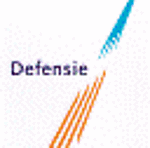I had the chance throughout the week to put in some work here and there and the next few steps were ideal for that as they had lots of little sub-assemblies to deal with.
Step 15 addresses the top half of the turret and two of the sub-assemblies deal with the periscope sights. One is the standard sight common to the StuG family and the other is the "rabbit ears" style. The StuG style was a four part assembly and I used a pin vise to drill out it's solid face as well as to deepen the eye holes. The "rabbit ears" scope was a 5 part assembly while it had the external lens faces molded vs. a solid face, I deepened these a bit with the pin vise as well.

One of the other sub-steps here involves adding the various gear to the turret sides, I only installed the various storage boxes and items that would be painted the same hull color, the rest of the gear such as the MP40 pouches, the gas masks, etc. will be painted and installed later. I did test fit some of the gear to make sure that the location marks provided by Trumpeter would actually work and, while snug, there's enough room for everything to go where it belongs.

Once the periscope sights had had a chance to set up good and solid so they could be handled without falling apart, I installed them into the upper turret as well. Their placement is a bit tricky since the turret slopes towards the rear and both need to be level, so some fine-tuning was necessary to get them just right.

Moving on to Step 16, this step consists of building up the breech which is three parts plus two for the block and another two that make up the recoil housing. The three-part approach requires some sanding to eliminate the inevitable seam to produce a single cast part but the fit between the parts is pretty good and using regular glue helps create a little seam that can then be sanded down easily. The breech block itself is rather plain...there's no detail on the face of the block and it's a tight fit into the breech with the cap, part C27, fitting flush. The fit of C27 to the cutout provided wasn't too exact, the cutout is a tad larger at the top than it should be.


Step 17 has 4 sub-assemblies to create parts that will be added to the breech in Step 18. There's a 2 part cylinder, a 2 part assembly for the left side recoil guard, a 5 part (including 2 PE) assembly for the recoil cylinder and a 2 part assembly for the left side mount and elevation gear. The fit on the left side recoil guard is critical, the end of the rail needs to be flush with the edge and the diagram isn't too clear on this and there's not much of a contact surface where it matches up with part C38, so it needed careful gluing and monitoring to make sure the rail didn't sag out of place.

Step 18 is a very busy step, first up is the addition of all the sub-assemblies done in Step 17. The two holes that are designed to take the recoil cylinder assembly and part C13 have a small rectangular obstruction on their inside, so it was necessary to trim down the mount pins for them to fit flush, another example of mount pins and holes not matching up in this kit. The guard rails were also installed and the whole assembly set off to the side to dry for a bit. You'll notice that the placement of the left side rail blocks the breech block from being able to function properly, this is how Trumpeter designed it all to go together, there's no other way to assemble it, and produces another accuracy issue to consider.

The other main sub-assembly deals with the main gun barrel, muzzle brake, and mantlet. Each of these are constructed from two halves, so seams are an issue. The muzzle brake halves are molded with 2 locator pins that are supposed to aid in alignment but actually produces the opposite and it was necessary to remove the pins and glue the halves together and align them manually. Even with that adjustment a small amount of putty was needed on the top join and very careful sanding required to eliminate the inevitable seam. The detail on the muzzle brake is not high to begin with, the locking nut on the top is essentially just a molded on dot and the collar itself is only faintly molded and the resulting sanding didn't help much to keep that intact. Flash was present inside the baffles and had to be carefully removed, once the two halves were joined I also used a round needle file to remove the flash on the circular opening so as to preserve its shape.
The mantlet also fit generally well together, only needing a small spot of putty where the sprue attachment points had been but it's seam was a little harder to deal with due to the complex curves it has. The barrel halves went together without any issue, the only bright spot of the three, and just required some light sanding to remove its seam.

The next item was to join the gun elements together with the mantlet and install it into the turret. The "D" shaped location post on the gun barrel didn't line up properly with the corresponding hole on the muzzle brake, so I removed the post entirely and sanded it down and glued the brake directly to it. This required some very careful adjusting to get it positioned correctly and centered.
I installed the barrel to the mantlet and the base of the barrel is supposed to fit flush into the mantlet sleeve. The actual fit wasn't quite there, so some additional putty work was necessary to fill the small gaps.
The "cheeks" on the mantlet are supposed to be integrated in with the bolt strips that Trumpeter molded into the turret directly. Once the mantlet and gun are installed, there are gaps that require putty and very careful sanding to correct to avoid destroying the bolt detail in that area.

The final element of this step is the integration of the breech in with the turret. The end of the breech has a circular element that mates up with the gun and figuring out just the right alignment takes a bit of effort and multiple dry-fits before committing to glue. Some back and forth and strategic sanding was necessary to get the fit right and insure the breech lined up with the gun itself, but eventually I got there.

The test fit with the lower turret half shows that everything is an extremely tight fit. The gunner's chair rests right up against the recoil guard for example and the space tolerances for all the various gear and instruments is tight. As a result, I'm going to paint the turret top and bottoms separate so I'll have room to work with the remaining gear after the initial painting is done.










































































